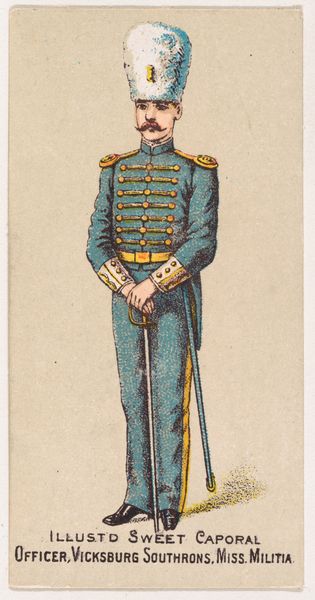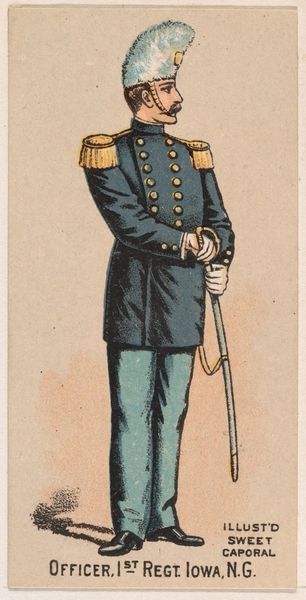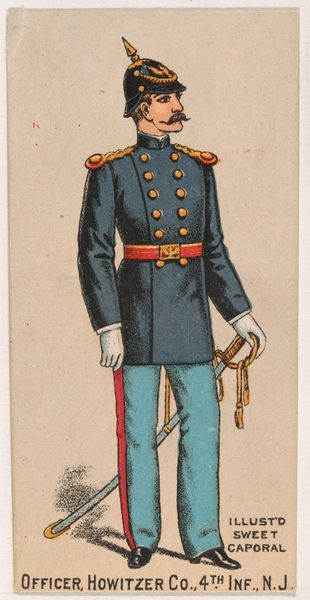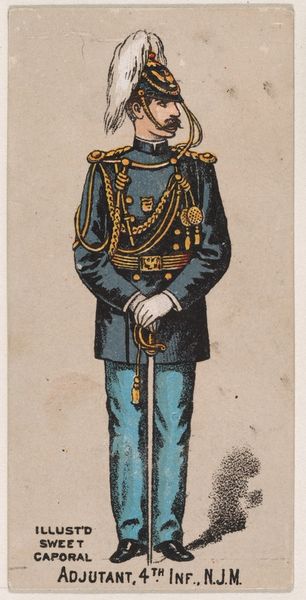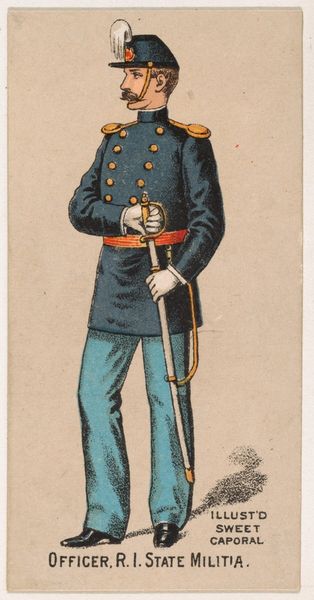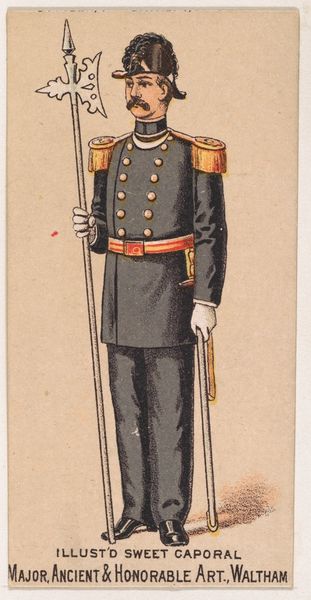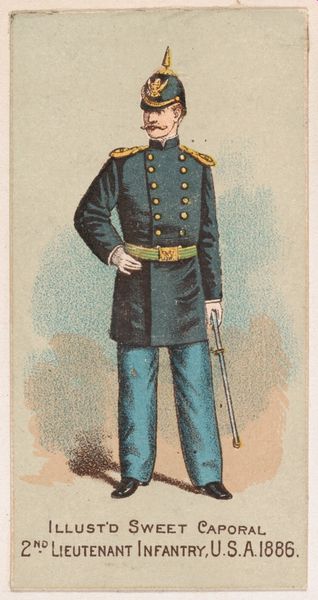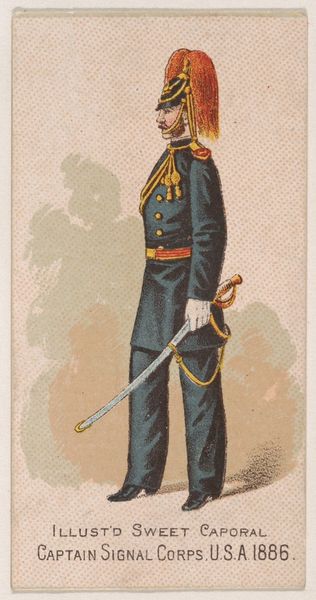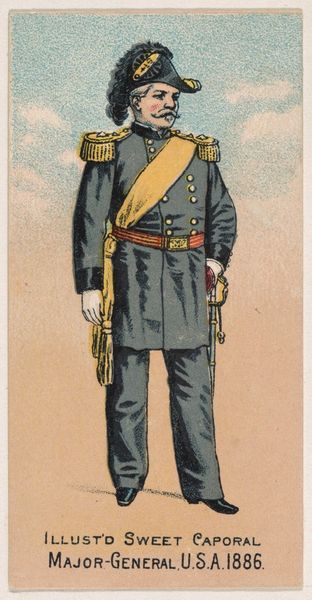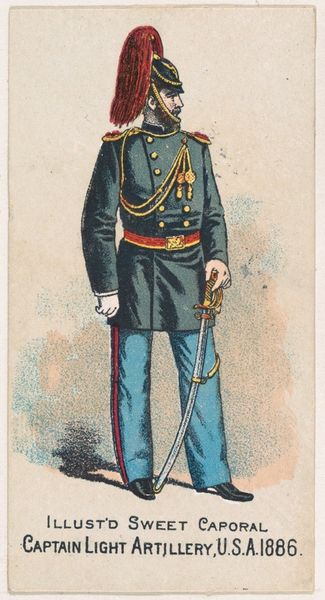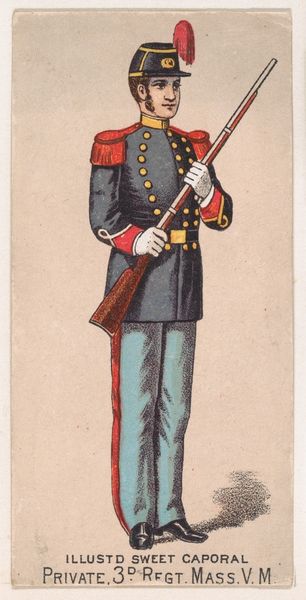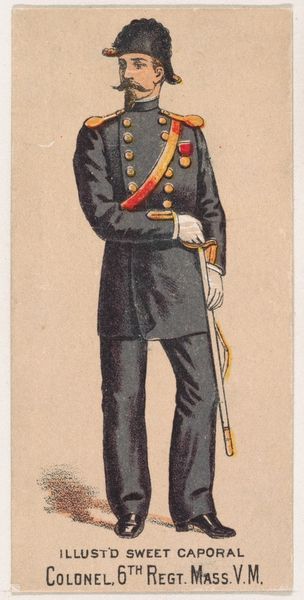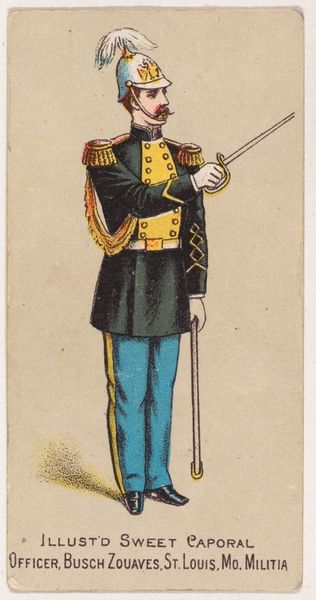
Captain of Cavalry, United States Army, 1886, from the Military Series (N224) issued by Kinney Tobacco Company to promote Sweet Caporal Cigarettes 1888
0:00
0:00
drawing, print
#
portrait
#
drawing
# print
#
men
#
genre-painting
#
history-painting
#
academic-art
Dimensions: Sheet: 2 3/4 × 1 1/2 in. (7 × 3.8 cm)
Copyright: Public Domain
Editor: Here we have a print from 1888, “Captain of Cavalry, United States Army, 1886, from the Military Series,” issued by Kinney Tobacco Company. It's a drawing or print, seemingly made to promote Sweet Caporal Cigarettes. The captain’s uniform is so detailed, but his expression feels almost…distant. What’s your take on this work, particularly its role as a commercial object? Curator: Well, that's an insightful starting point. Consider the context. These trade cards emerged during a period of burgeoning industrial capitalism and expansionist nationalism. The ‘heroic’ military figure became a popular advertising symbol, subtly linking products to ideas of national strength and virility. Editor: So, the cigarette company is capitalizing on… militarism? Curator: Precisely. It's not just about selling tobacco; it's about aligning the brand with an image of power, authority, and the romance of the military. Think about how the meticulous detail you mentioned—the braided cords, the elaborate hat— contributes to this sense of spectacle. This image helped to shape the *idea* of the military in the public imagination. It is also highly sanitized of the violence inherent within the occupation and the many battles that took place with Indigenous communities. Editor: It seems strange to think of art being used this way… as essentially propaganda. Curator: The public role of art is complex and can be used as a tool for promotion and control. In that sense, these cards weren't necessarily intended to be high art. How effective do you think such imagery was in shaping public opinion? Editor: It's a clever tactic and is still happening now. I suppose I never thought about it this deeply! Thanks for your time and insights! Curator: My pleasure, your interest is refreshing, especially considering the historical weight within even these smaller artistic pieces.
Comments
No comments
Be the first to comment and join the conversation on the ultimate creative platform.
